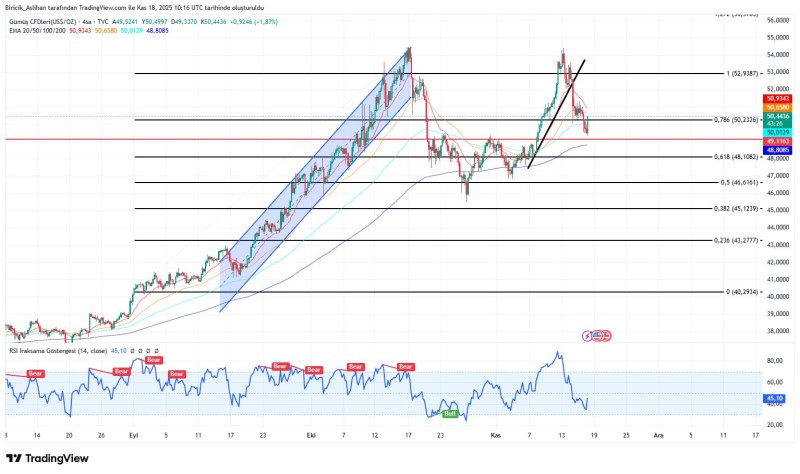⬤ Silver is trading near a pivotal technical area as recent market action shows a shift from a strong rising trend into a corrective structure. The metal is now attempting to stabilize around the $50.23 level, which serves as an important resistance zone on the chart. The current four-hour data shows XAG/USD recovering modestly near $50.49 as the market reassesses direction following the latest volatility. The chart clearly illustrates a sustained climb in silver over recent weeks, followed by a breakdown from an ascending channel and a retest of major Fibonacci retracement levels. A confirmed move above $50.23 could allow XAG/USD to advance toward $50.65 and $51.00, with the potential to revisit the $52.90 area if the upward momentum strengthens. These levels match earlier reaction zones and align with moving average clusters that previously guided the uptrend. The RSI indicator is currently near 45, signaling that the recent pullback remains controlled compared with earlier bearish swings marked on the chart.

⬤ On the downside, failure to regain strength above $50.23 may invite renewed selling pressure. In that case, silver could retreat toward $49.11, $48.80 and $48.10, which correspond to recent swing lows and the mid-range Fibonacci zones shown on the chart. These areas have historically acted as consolidation levels within the broader trend and represent structural points where buyers previously stepped in. The recent break of the steep recovery slope and the narrowing of EMAs emphasize that short-term momentum remains fragile, making these support areas especially relevant. The current technical setup around XAG/USD matters because silver often reacts strongly to shifts in liquidity, sentiment and trend behavior. With the price positioned between well-defined support and resistance levels, upcoming movements may clarify whether the broader uptrend resumes or a deeper correction unfolds. How the market reacts around the $50.23 zone will likely influence expectations across the precious metals sector as conditions continue to evolve.
 Usman Salis
Usman Salis

 Usman Salis
Usman Salis


